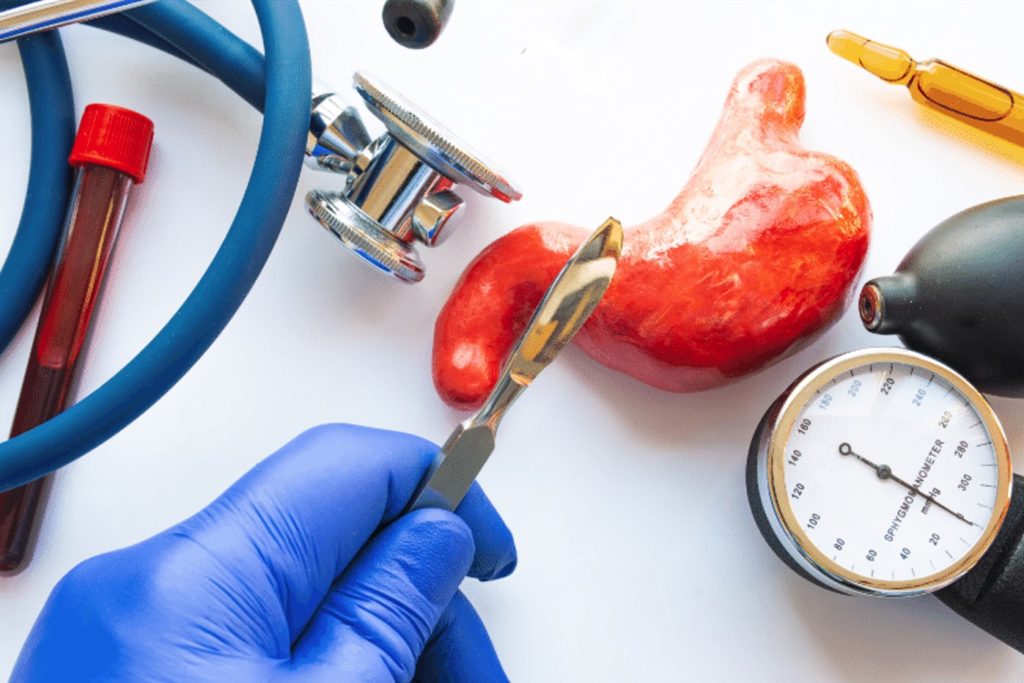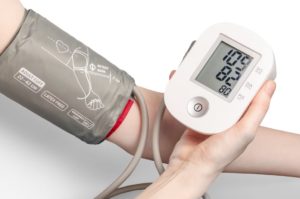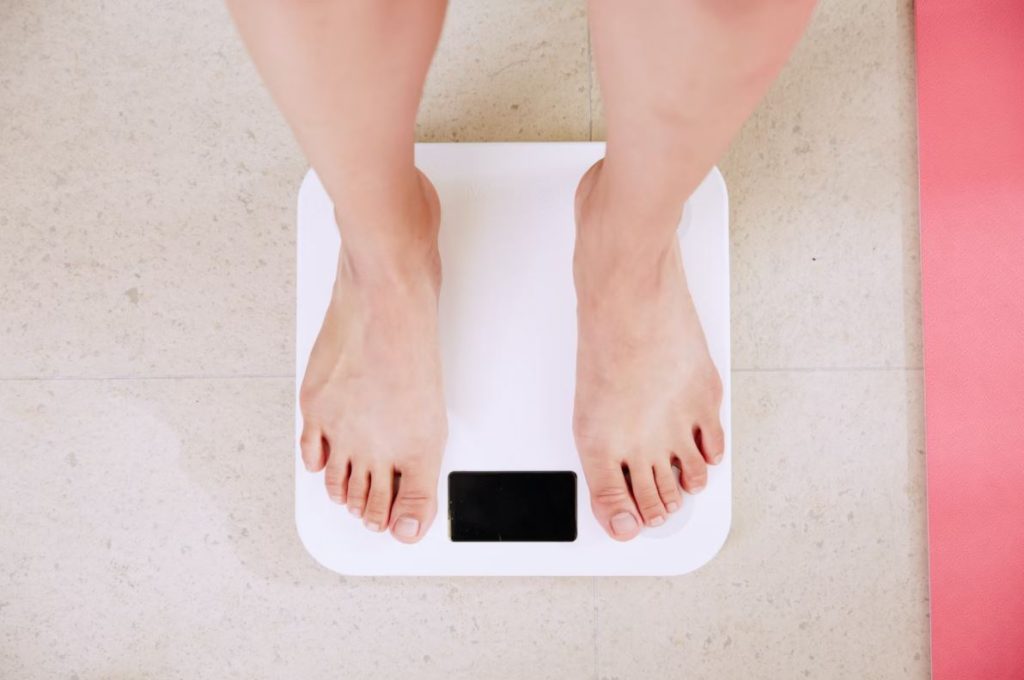If you have tried various diet plans, exercises and even slimming pills to cut down your weight over a prolonged period of time (we would say multiple years) yet still find yourself still carrying excess pounds, then bariatric surgery could be a “Hail Mary” option worth exploring with your GP first and surgeon second.
Bariatric surgery is an invasive procedure performed using a laparoscope or a robot and has been widely studied in the medical field for its efficacy in helping control weight.
Today there are many available bariatric surgery options. This article will provide you with relevant information about weight loss surgeries to enable you to have a good discussion with your bariatric surgeon.
What is bariatric surgery?
Weight loss surgery (also known as metabolic and bariatric surgery) are surgical operations that help an individual lose weight by adjusting parts of the digestive system, particularly the stomach and the small intestines.
The operation reduces the size of the stomach and bypasses parts of the intestine. These surgical techniques help the patient consume less food and alter the absorption of ingested food. Also, the operation makes you feel less hungry and increase your fullness, resulting in weight loss.
In addition, bariatric surgery may be beneficial for individuals with excess weight who are at risk of developing health conditions such as sleep apnea, stroke, diabetes, and hypertension.
Types of Bariatric Surgery
There are many types of bariatric surgery available today. While each type of bariatric surgery has its benefits and risks, they limit the amount of food your stomach can contain, decrease absorption of nutrients, or both.
The following are the most common bariatric surgery options approved by the American Society for Metabolic and Bariatric Surgery.
1. Gastric Bypass Surgery
Roux-en gastric bypass surgery (often called gastric bypass surgery) is the most common weight loss surgery performed over 50 years.
It is a two-part surgery that involves dividing the stomach into two sections – a smaller top pouch and a more significant lower section, typically bypassed. The second part of the surgery involves dividing the first part of the small intestine into two parts: the top portion and the bottom portion.
The newly created stomach, the pouch, is connected to the bottom end of the small intestine. The now redundant bottom portion of the stomach is then joined to the small intestine’s top portion making a Y-shaped section.
How does gastric bypass surgery work?
The newly created stomach is much smaller than previously – about the size of an egg. This limits the amount of food the stomach can hold, meaning less food is ingested.
In addition, the first part of the small intestine is bypassed, meaning fewer nutrients are absorbed into the body, restricting calories.
The modification also makes you feel less hungry and increase fullness, thus assisting your body to attain a healthy weight.
The operation provides you with reliable and long-lasting weight loss. Studies show that it is effective in preventing obesity-related conditions.
However, gastric bypass surgery may lead to vitamin and mineral deficiencies. Also, the operation is associated with the risk of developing bowel obstruction and dumping syndrome.

2. Sleeve gastrectomy
As the name suggests, sleeve gastrectomy involves removing most of the stomach (about 80%) and leaving a sleeve (tube-shaped pouch) as a functional stomach.
The sleeve is small and only holds a small amount of food. The operation also decreases the production of an appetite-regulating hormone called ghrelin.
How effective is sleeve gastrectomy?
As in gastric bypass surgery, the new stomach holds little food, thus reducing the number of calories one can take.
In addition, most of the stomach is removed, leading to decreased production of ghrelin. This makes you less hungry full and helps you achieve a healthy weight.
Sleeve gastrectomy is a simple, effective, and safe surgery for weight loss and alleviating obesity-associated disease.
However, the operation may result in gastroesophageal reflux disease and heartburn.
3. Gastric band surgery
This surgery involves putting an inflatable band made of silicone near the top portion of the stomach. As a result, there is a decrease in the stomach’s volume to hold less food.
How do gastric bands work?
Gastric band surgery increases the feeling of fullness and reduces the amount of food the stomach can hold. The band device has a port under the skin which is used to inject fluid to regulate the opening of the band device.
While the food transit in the stomach is maintained, the amount of food is, limited by the smaller opening of the band.
The procedure causes very few complications. No part of the stomach or intestine is physically removed, and the patient can be allowed to go home a few hours after surgery.
In addition, there is little risk of developing vitamin and mineral deficiencies. The band device can also be removed if necessary.
However, you may need many follow-up visits to adjust the band and there is often a high re-operation rate. Additionally, there is a risk of stomach erosion over time due to band slippage.
It’s worth noting that gastric bands result in less weight loss than other types of bariatric surgery.
4. Duodenal switch
This operation is also called biliopancreatic diversion with a duodenal switch.
It is a two-part procedure whereby the stomach is modified into a tube-shaped (sleeve) pouch-like in the sleeve gastrectomy. The pouch is then connected to the distal portion of the small intestine, bypassing most of the small intestine like in gastric bypass surgery.
How does the duodenal switch work?
The new stomach holds less food, thus allowing you to eat less food. In addition, approximately 75% of the small intestine is bypassed, significantly reducing the absorption of nutrients and calories. In addition, the surgery reduces hunger hormones and improves control of blood sugar. This helps you maintain a healthy weight.
Duodenal switch is one of the best surgical operations for alleviating obesity and treating type 2 diabetes.
However, most of the small intestine portion is bypassed, thus leading to malabsorption and vitamin and micronutrient deficiencies. The operations are associated with the risk of reflux and heartburns and lead to increased bowel movements.
Which Type of Weight Loss Surgery is Best For You?
The available bariatric surgery options are not “one size fits all.” The best choice for you depends on many factors, such as body mass index and other health problems.
Consider consulting your surgeon to examine you and see you met the medical criteria for bariatric surgery.
If you qualify for the procedure, your surgeon will provide you with instructions on how to get yourself ready for a particular type of bariatric surgery.

Diet After Bariatric Surgery
Your doctor will ask you to avoid particular foods after bariatric surgery. For example, you may be asked not to consume food one or two days after surgery. This gives your digestive system, especially your stomach, time to heal.
Here are the diet recommendations that you should follow after having bariatric surgery.
Liquids
The first few days after bariatric surgery, you will drink clear liquids. Once your digestive system can tolerate clear liquids, you can take other liquids.
The following are liquids you can take in the first few days after bariatric surgery
- Milk
- Broth
- Unsweetened juice
- Caffeine-free or coffee
- Non-sugar-containing gelatin or popsicles.
Pureed foods
You start having pureed foods a week after your stomach can handle liquids. But ensure the food have a smooth consistency and is free of solid pieces.
Also, increase the frequency of food intake to 6 meals per day, each consisting of 4 to 6 tablespoons of food.
Remember to eat slowly for each meal.
The following are some of the food types that can puree well:
- Cooked cereal
- Cooked vegetables
- Lean ground meat or fish
- Cottage cheese
Remember to blend the solid food with water, milk, unsweetened juice, or broth.
Soft foods
Once your stomach can tolerate pureed foods, you may add soft foods to your diet.
Also, you can reduce the frequency of meals to about 3 to 5 per day. Ensure to take approximately one-half cup of food in each meal.
It is recommended you chew the food well before swallowing.
The soft food includes:
- Eggs
- Cottage cheese
- Rice
- Cooked vegetable.
- Flaked.
- Cooked cereal
Solid foods
You may start taking solid foods about eight weeks after surgery. Ensure you begin by taking three firmer meals each day consisting of 1 cup of food.
The number of solid meals you should consume depends on whether you can solid tolerate solid food.
You must eat one solid food to avoid nausea, vomiting, or nausea.
What you should do if weight loss surgery does not work
Sometimes you may fail to lose weight as you had hoped after having bariatric surgery. Take it easy! Ensure you immediately notify your doctor because you may experience health problems. Your doctor will monitor your weight loss and determine the factors that make you not lose weight.
Bottom line On Resorting to Surgery
Weight loss is a journey. Before choosing to have bariatric surgery, try out diet and lifestyle modification and see if they can help you lose weight.
If diet and exercise are not working, see a bariatric surgeon to evaluate whether you qualify to have bariatric surgery.
Sources
Bariatric Surgery Procedures. https://asmbs.org/patients/bariatric-surgery-procedures
Bariatric surgery. https://www.mayoclinic.org/tests-procedures/bariatric-surgery/about/pac-20394258#:~:text=Gastric%20bypass%20and%20other%20weight,problems%20because%20of%20your%20weight.
What are the Three Different Types of Weight Loss Surgeries? https://www.osfhealthcare.org/blog/what-are-the-three-different-types-of-weight-loss-surgery/
Gastric bypass diet: What to eat after the surgery. https://www.mayoclinic.org/tests-procedures/gastric-bypass-surgery/in-depth/gastric-bypass-diet/art-20048472














